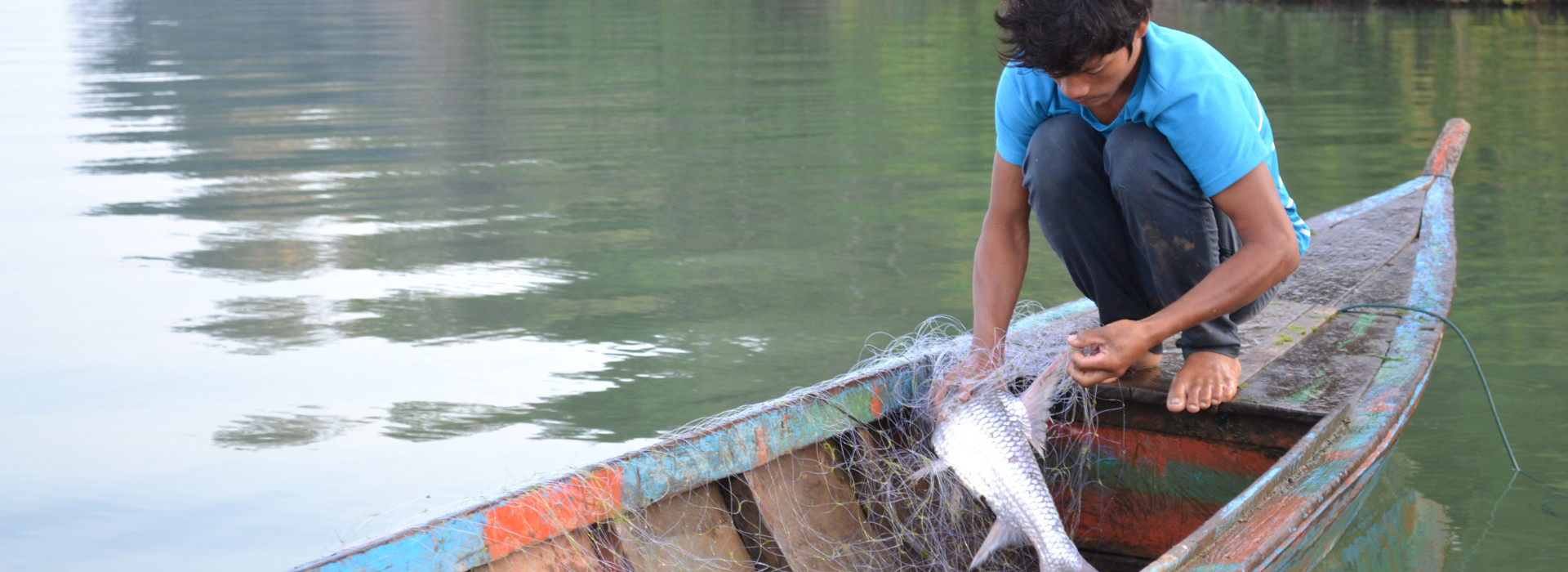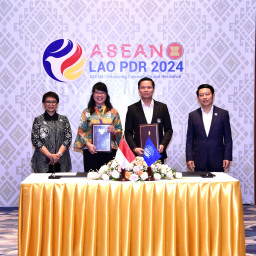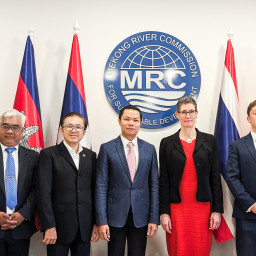Monitoring Fisheries in the Lower Mekong Basin
The Mekong River is one of the largest river in the world and is home to a wealth of biodiversity and aquatic life. Fisheries is a crucial contributor to socio-economic development in the Mekong and a vital source of livelihood and food security for people living along the Mekong River banks. On the flip side, increasing infrastructural development, population growth, and economic development have changed the fisheries trends over the past few decades. The Mekong countries, thus, have put fisheries monitoring central to understand its status and trend in light of development pressures in the Basin.
“We recognise the value of fisheries that is crucial to riverine communities, and that’s why the MRC has supported fisheries monitoring program, and now continues to be part of our technical work” said CEO Dr Pham Tuan Phan.
Since 1994 to date, the Mekong River Commission (MRC) have supported four major monitoring programs to track the status and trends of fisheries in the Lower Mekong Basin (LMB)—deploying different methods.
The Fish Abundance and Diversity Monitoring Program implemented in Cambodia, Lao PDR, Thailand, and Vietnam is a routine artisanal fisheries monitoring to determine status and trends of fish abundance and diversity in the LMB through temporal and spatial variation.
The Fish Larvae Density Monitoring Program implemented in Cambodia and Vietnam is an effective means to assess fish larvae quantity and density, and assess the likely fish spawning grounds.
The Dai Fishery Monitoring Program implemented in Cambodia is the only inland industrial fishery established for more than 140 years, and used to determine the trend of key fishery indicators such as abundance, length frequencies and fish prices at landing sites of migratory fish species that migrate from the Tonle Sap Great Lake to the Mekong.
The Lee Trap Fishery Monitoring Program implemented in Lao PDR at the Khone Falls (Khong District, Champasack Province) tracks the abundance and diversity of migratory white fish in the Lower Mekong River, and supports a valuable information on fisheries resources for fisheries management and impact assessment purposes.
In July 2016, the Governor of Khong district ordered that Lee trap fisheries in Khong District, Champasack province be stopped, which applies also to Lee trap fisheries monitoring for the year 2017. This guidance follows commitment of the Khong District and Champasack Provincial Office to curb illegal fishing activities (including illegal fishing gears) under the Lao Fisheries Law and Supplement Order by Governor of Khong District (14 December 2016) that prohibits the use of illegal fishing gears and operation. To date, more than 340 lee traps have been removed.
The suspension of lee trap fisheries is an effort to legally control all operations of lee traps as a first step. Lee traps are used for monitoring purposes but if allowed, will serve as a bad example and send different messages to fishers who use illegal lee traps.
Together with its Member Countries, the MRC strives to manage fisheries by improving and sharing technical know-how on fisheries management and raising awareness on the sector’s significance for the Mekong’s environment and its people. Its Basin-wide Fisheries Management and Development Strategies 2018-2022 has been endorsed by the MRC Joint Committee (the management body of the MRC) in August 2017 and for approval by the MRC Council in November 2017.
This strategy is driven by national strategies in the four Member Countries and focus on capture fisheries including impact and mitigation of hydropower and irrigation dams; transboundary movement of aquatic organisms; transboundary fisheries management; and other cross cutting issues like gender and climate change.
For more information and research on fisheries, go to: www.mrcmekong.org/topics/fisheries/





